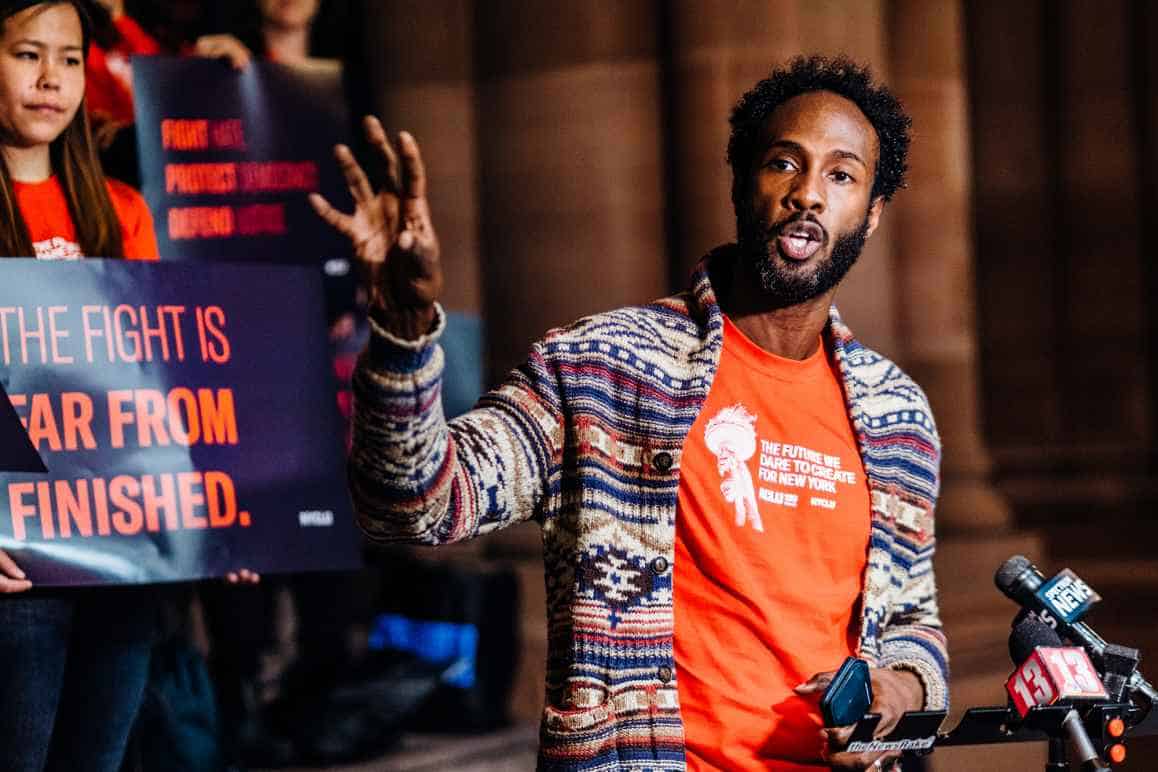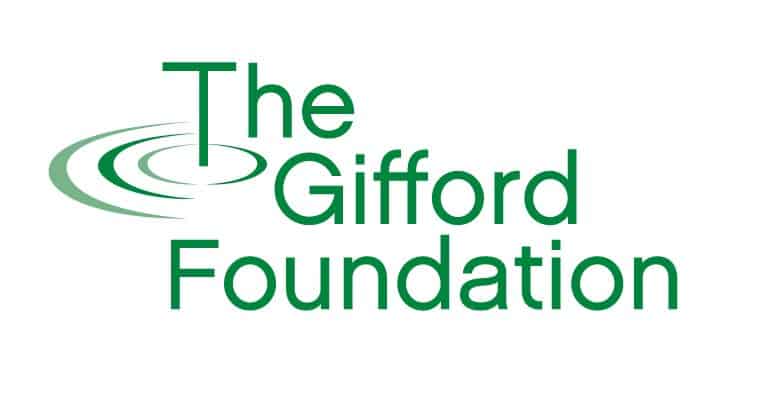The I-81 Project is a Civil Rights Issue
Yusuf Abdul-Qadir, Director of the NYCLU’s CNY chapter, speaks about the racist history of Syracuse’s I-81 overpass. As City and County residents debate the future of the crumbling highway, he warns that we must be careful not to repeat the injustices of the past.
Published: August 18th, 2020
This is a busy time for Yusuf Abdul-Qadir. As Director of the NYCLU’s CNY chapter, he works not only as a watchdog checking for violations of civil liberties and civil rights in our region, but also as an advocate for civic engagement and participation. One issue that the NYCLU has been heavily involved with is the debate surrounding the rebuilding and redesign of Syracuse’s I-81 overpass. Mr. Abdul-Qadir is quick to point out that this is not just another infrastructure project: the problems we are facing and the various paths forward are part of a larger story about which voices are heard and whose health is prioritized. Just as we grapple today with the legacy of a project from 50 years ago, our decisions in this moment will have profound implications for generations to come.

Yusuf Abdul-Qadir is the Director of the NYCLU’s CNY Chapter and is working to address the civil liberties and civil rights issues surrounding the I-81 project. Photo Credit: NYCLU.org
The origin of the I-81 overpass is intimately connected to the practice of racially segregating and sabotaging neighborhoods through redlining. Abdul-Qadir explains how following the New Deal programs of the 1930s, the government began to take an active hand in making mortgages more accessible to prospective homebuyers by lowering interest rates and down payment requirements. It was at this time that the concept of the 30 year mortgage was born. These advantages, however, were in practice only extended to white neighborhoods. Black neighborhoods were redlined, meaning that residents were often unable to make the transition from renting to home ownership. This had a double effect of inhibiting the accumulation of property and capital by Black families while also preventing new construction and renovation in those neighborhoods.
As these areas were left to decline, they became seen as expendable. “We can’t put a highway in a suburban community, and we certainly aren’t going to do so in an affluent white community, so we may as well put it in what was considered the ‘slums’ – in the Black community,” says Abdul-Qadir. “If you fast forward 50 years, you see that those areas have the highest levels of concentrated poverty.” But the people living alongside I-81 suffer more than economic damage. Fumes and exhaust from cars create measurably higher rates of asthma, bronchitis, COPD, and other respiratory illnesses among those who live next to the highway. Abdul-Qadir explains that there are also higher levels of high blood pressure and diabetes, and overall a lower life expectancy.
To help ensure that the next chapter of I-81’s history does not repeat the inequities of its past, the NYCLU is working to encourage public discourse and civic engagement around the project while paying particular attention to lifting up the voices of those who have historically been ignored and marginalized. “Most importantly what we are trying to do is build the power of the people who live right next to the highway,” says Abdul-Qadir. “Unfortunately, most of the conversation is centered largely around suburbanites’ concerns for access to and from the City.”
A recent grant from the Gifford Foundation has helped the NYCLU support public outreach operations where they educate people about the racial and social justice implications of this project and invite testimony from those who have been personally affected. In addition to promoting public discourse and awareness, they have been advocating for an equitable path forward on both a state and federal level. One important milestone occurred in October of 2019 when the Washington Post ran a major story about Syracuse and the situation surrounding the I-81 project. Abdul-Qadir says that “support from the Gifford Foundation and others is really key and instrumental to making us not just address these issues here in Syracuse and begin to peel away at those structural inequities, but really become a national model for what can be done across the country.” Other communities will soon be dealing with this same issue as their infrastructure fails and needs to be rebuilt and/or redesigned. Syracuse happens to be one of the first places having this conversation and therefore has a unique opportunity to set a positive example.

More than 50 years ago, Syracuse’s I-81 overpass was built on top of the City’s Black community with disastrous consequences. The crumbling structure continues to divide the City both literally and figuratively as concerns about its future are raised. Photo Credit: Daylight Blue Media
In broader terms, much of the NYCLU’s efforts surrounding the I-81 project are about boosting civic engagement and reinvigorating the democratic process. By teaching new visions and possibilities about how the future of Syracuse might look, it invites and equips new voices to join the conversation and be heard. Abdul-Qadir argues that one of the first steps is reminding people that their elected officials are supposed to be working for them. “Too often we’ve allowed the dynamic to be that we are the servants and they are the officiants, when actually they are public servants.” He strongly encourages residents to reclaim Common Council and School Board meetings by exercising their right to comment and participate.
Participating in elections – especially local elections – is also an essential action that is too often taken for granted. Abdul-Qadir encourages voters to think beyond simply casting their ballot and suggests that they work to hold politicians to their promises after Election Day. “I think voting is important but it’s not just voting – it’s showing up afterwards to hold people accountable.” He explains that the same principle applies when gathering petitions for a specific cause. “It’s about follow-up.” The petition is only the beginning of the work. You then have to present it, ensure accountability and track progress. Patience and endurance are essential, says Abdul-Qadir. “We need to all recognize that it’s not a sprint – it’s a marathon.”
The NYCLU’s work surrounding the I-81 project serves as an important reminder that there is much more at stake than just the construction itself. If we do not engage with and listen to the communities that live adjacent to the highway, we are bound to repeat many of the same inequities of the past. “People don’t understand how comprehensive and how structural racism and white supremacy are in this country,” says Abdul-Qadir. “It addresses every sphere of Black and Brown people’s lives – in our health, in our education, in our employment, in our income, in our wealth, etc.” Certainly the I-81 project has affected all of these areas in powerful, lasting ways. The question that remains is what we are going to do about it.
Subscribe to the Gifford Newsletter
Start enjoying our free quarterly publication today.


